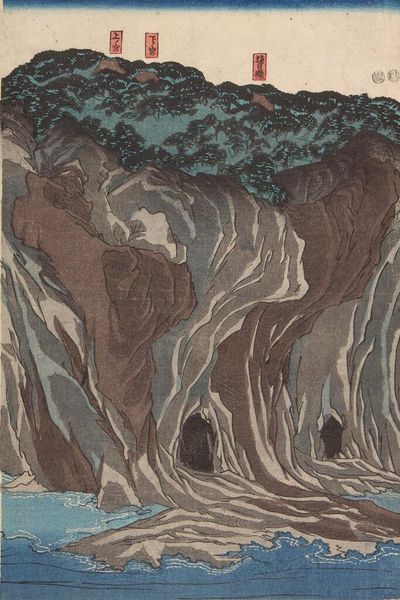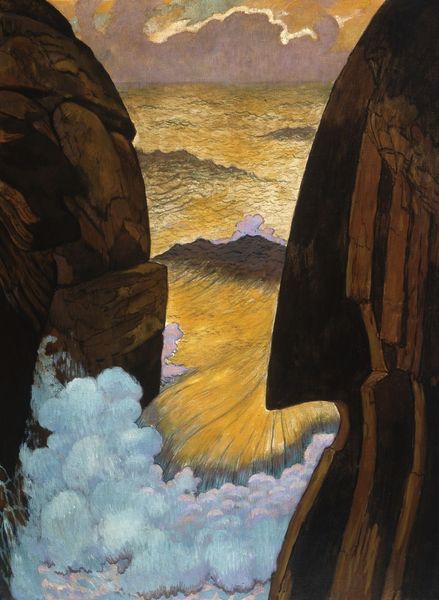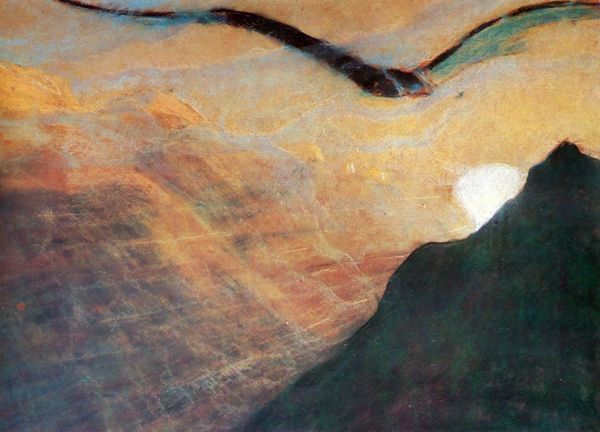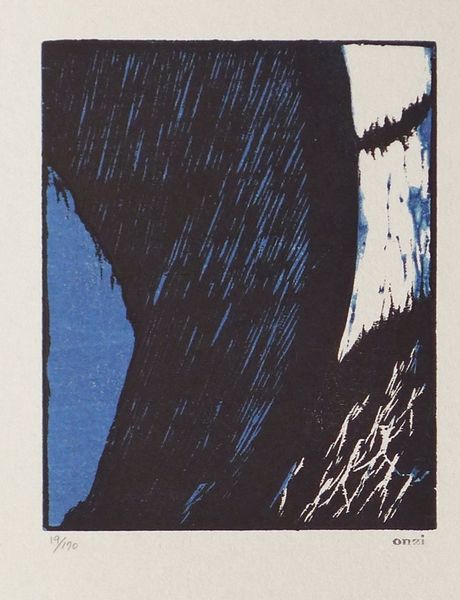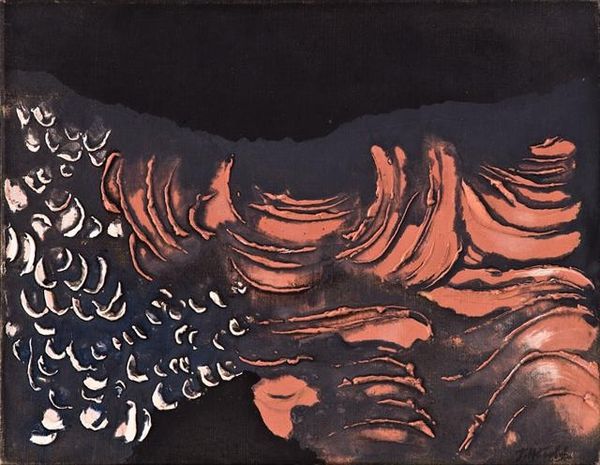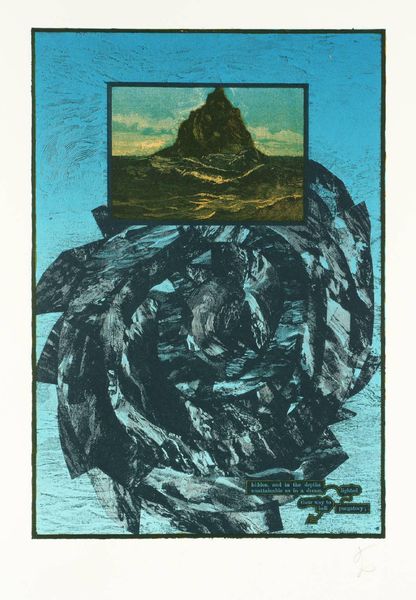
Copyright: Public domain
Georges Lacombe painted ‘Cliffs near Camaret’ with oil on canvas, and the effect is strikingly modern in its formal arrangement. Two massive cliffs frame a view of the sea, creating a composition that’s both imposing and intimate. The somber palette evokes a sense of solitude, inviting us to reflect on nature’s sublime power. Lacombe's use of simplified forms reduces the cliffs to near-abstract shapes. The textured brushwork animates the surface, bringing a tactile quality to the scene. The painting operates within a semiotic system where the cliffs signify permanence, while the sea represents the transient nature of existence. This interplay challenges fixed meanings, blurring the line between representation and abstraction. It prompts us to question how we perceive the natural world. Note how the very structure of the painting—the solid cliffs versus the fluid sea—mirrors the philosophical tensions between stability and change. 'Cliffs near Camaret’ functions as a site where these dialogues unfold, inviting endless interpretation.
Comments
No comments
Be the first to comment and join the conversation on the ultimate creative platform.
